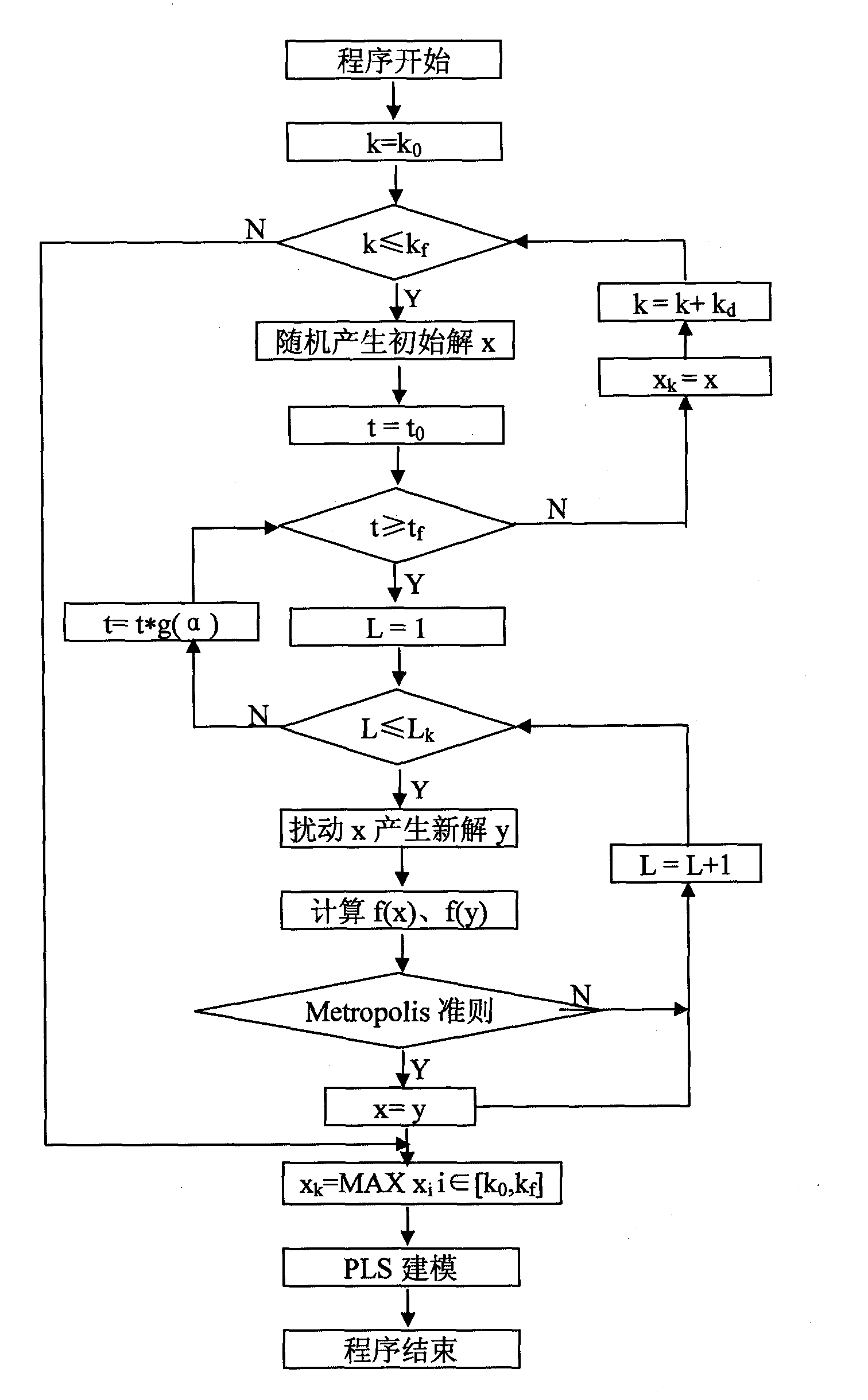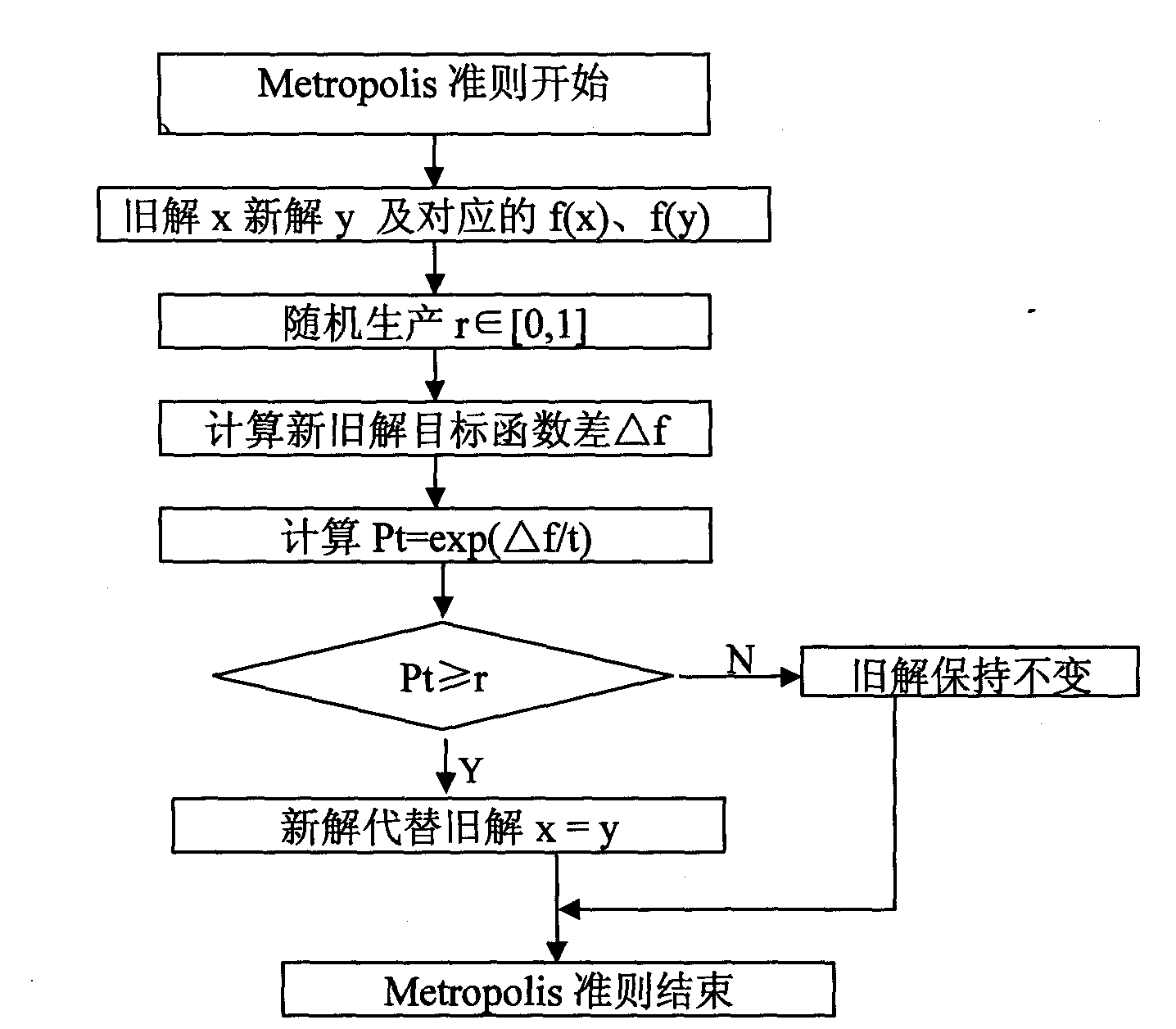Method for selecting characteristic wavelength of near-infrared spectrum based on simulated annealing algorithm
A simulated annealing algorithm and near-infrared spectroscopy technology, used in color/spectral property measurement, calculation, special data processing applications, etc., can solve the problems of low information intensity, overlapping spectral peaks, lack of scientific basis, etc. Accuracy, ensuring the effect of fast convergence
- Summary
- Abstract
- Description
- Claims
- Application Information
AI Technical Summary
Problems solved by technology
Method used
Image
Examples
Embodiment Construction
[0012] In the present invention, the near-infrared spectrum is firstly preprocessed. Commonly used spectral preprocessing methods include SNV (Standard Orthogonal Transform), MSC (Multiple Scattering Correction), wavelet transform, etc. The spectral preprocessing process also includes the correction set and prediction set samples division. The preprocessed near-infrared spectrum refers to the spectrum obtained by processing the original near-infrared spectrum of agricultural products and food with appropriate noise reduction methods, which can eliminate the noise caused by instrument signal drift and environmental condition fluctuations during data collection. Denoising methods include standard orthogonal transformation, multivariate scattering correction, centering, first-order / second-order derivative preprocessing methods, etc.
[0013] For the preprocessed near-infrared spectrum, when the algorithm starts to run, select the minimum number of wavenumber points from the full ...
PUM
 Login to View More
Login to View More Abstract
Description
Claims
Application Information
 Login to View More
Login to View More - R&D
- Intellectual Property
- Life Sciences
- Materials
- Tech Scout
- Unparalleled Data Quality
- Higher Quality Content
- 60% Fewer Hallucinations
Browse by: Latest US Patents, China's latest patents, Technical Efficacy Thesaurus, Application Domain, Technology Topic, Popular Technical Reports.
© 2025 PatSnap. All rights reserved.Legal|Privacy policy|Modern Slavery Act Transparency Statement|Sitemap|About US| Contact US: help@patsnap.com



